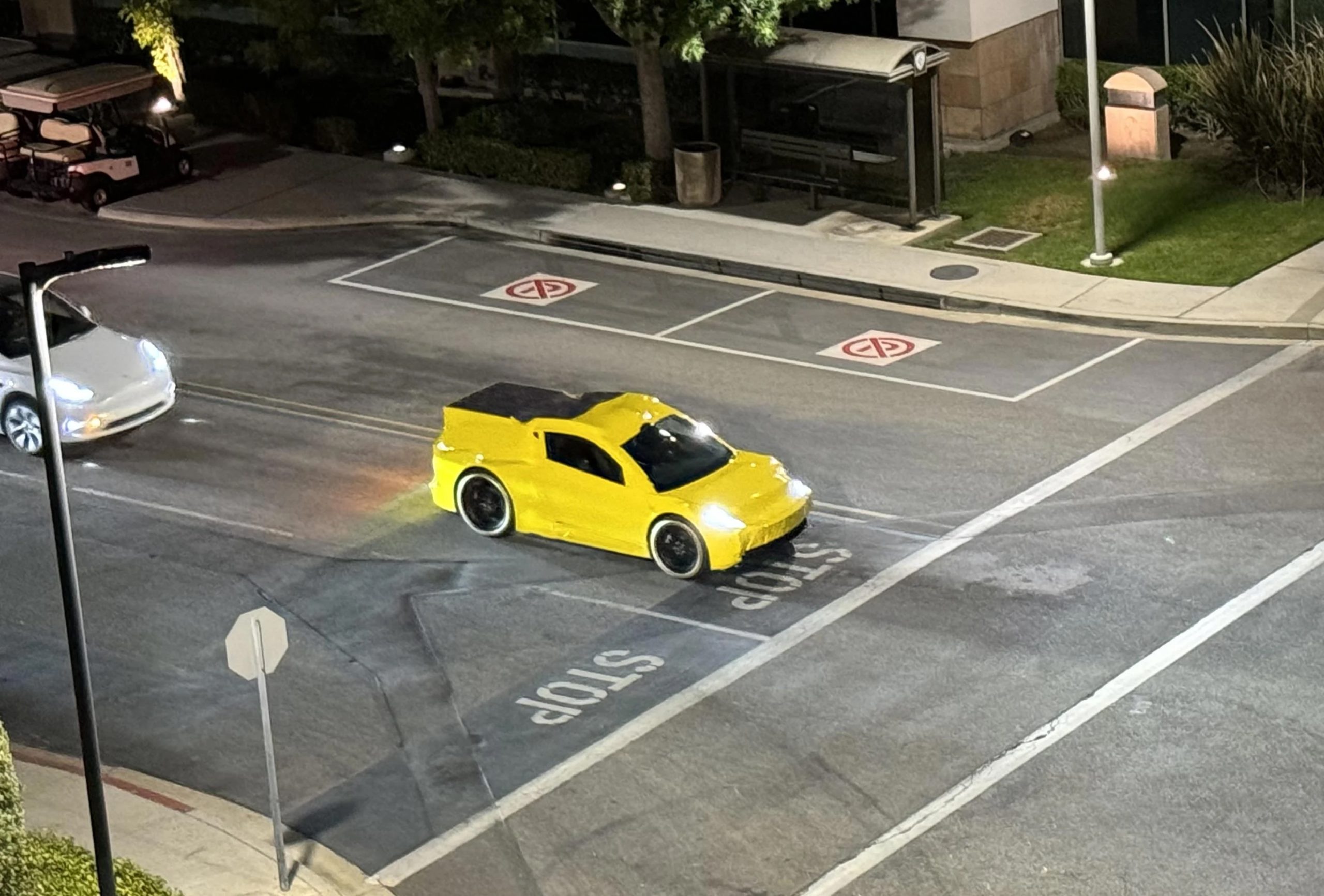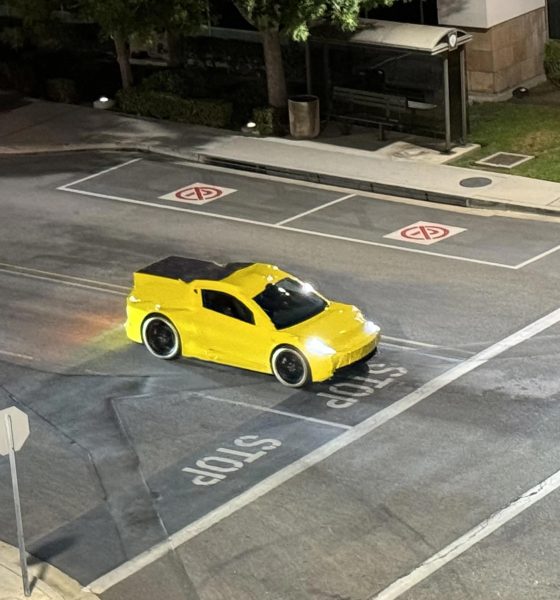

News
How consumers view robotaxis ahead of Tesla’s ‘We, Robot’ event: study
Ahead of Tesla’s Robotaxi unveiling event on Thursday, one firm has released data suggesting that early consumer experience with driverless ride-hailing platforms has generally been positive.
On Tuesday, J.D. Power shared the results of its 2024 U.S. Robotaxi Experience study, which found that, on average, consumers ranked driverless ride-hailing experiences an 8.53 out of 10. In its second year, the study surveyed 3,773 respondents along with 773 consumers who lived in cities such as San Francisco, Los Angeles, Phoenix, Las Vegas, and Dallas, where robotaxi services are already available.
Perhaps unsurprisingly, consumer confidence in robotaxis was about substantially higher in those who had prior experience in one of the self-driving vehicles, landing at 76 percent, and well above the 20 percent for those who had not. Consumer confidence was also improved by public exposure to the technology, with 34 percent of those who had not ridden but had witnessed self-driving vehicles expressing some level of trust and acceptance.
Notably, these results suggest that sheer experience with robotaxi platforms — both riding inside them and seeing them on the street — tends to give consumers greater public trust in these driverless solutions. The results also come as the market for driverless ride-hailing continues to grow, as Tesla and other companies ready their commercial robotaxi offerings.
The study featured five categories, including comfort and convenience, initiating rides, taking rides in the given vehicle, service availability and cost, as well as overall vehicle technology. Responses for the study were fielded in August.
What's special about FSD Supervised is that it works anywhere in the US & Canada.
No high definition maps, no geofence.
This means you can even use it in places that no Tesla has never traveled to before
— Tesla AI (@Tesla_AI) October 4, 2024
The key findings also included that consumers regularly seek out safety features and easy access to authorities, such as the inclusion of an emergency button in robotaxis. Service area coverage and cost remain barriers for some consumers who haven’t tried the services out yet, with the vast majority of companies employing a mapping strategy to certain service areas.
“The robotaxi segment is still anyone’s game, given that most people are not familiar with robotaxi brands and haven’t formed a clear associative imagery,” said Kathleen Rizk, J.D. Power’s Senior Director of User Experience Benchmarking and Technology.
Other key findings include that consumers strongly value how well vehicles navigate traffic laws, and how well they perform when maneuvering regular traffic. In addition, 77 percent of rides said they would prefer a driverless robotaxi to a ride-share with a human driver when needing to have a private conversation.
You can view J.D. Power’s full study results for the 2024 Robotaxi Experience Study on the firm’s website here.
Currently, driverless ride-hailing services and tests are operated by the Google-owned company Waymo, May Mobility, Zoox, and Motional. Meanwhile, General Motors (GM) subsidiary Cruise was forced to halt self-driving operations last fall after an accident with a pedestrian, though it’s currently aiming to relaunch services by the end of this year.
While Tesla offers its Full Self-Driving (FSD) Supervised to customers, it doesn’t currently have the software available to consumers as a driverless ride-hailing system. However, the company is widely expected to unveil a ride-hailing service during its “We, Robot” event on Thursday, and it has already teased a mobile app ride-hailing platform.
The company’s FSD Supervised, eventually expected to become Unsupervised as Tesla targets the cars becoming safer than human drivers, is also one of the only self-driving softwares out there that doesn’t utilize area mapping. For that reason, Tesla has touted its ability to scale FSD beyond mapped-out service areas, especially when paired with the ongoing training of its AI neural network through real-time driving footage.
Apparent camouflaged Tesla Robotaxi prototype sighted at Warner Bros. Burbank
What are your thoughts? Let me know at zach@teslarati.com, find me on X at @zacharyvisconti, or send us tips at tips@teslarati.com.

Cybertruck
Tesla Cybertruck undergoes interior mod that many owners wanted

Tesla Cybertruck is significantly different from traditional pickups on the market in a lot of ways. However, one feature that was recently modified with its interior was a highly requested characteristic that is present in other trucks, but was void from Cybertruck.
Tesla went with a five-seat configuration with Cybertruck: two in the front and three in the back. The spacious interior is matched with plenty of storage, especially up front, as a pass-through, center console, and other storage options, but some Tesla fans wanted something different: bench seating.
Bench seating is popular in many full-size pickups and allows three passengers to sit up front. The middle seat is usually accompanied by a fold-down storage unit with cupholders.
Tesla decided to opt for no bench seating up front, despite the fact that it equipped bench seating in the unveiling in 2019. Interior photos from the unveiling event from nearly six-and-a-half years ago show Tesla had originally planned to have a six-seat configuration.
This was adjusted after the company refined the design:

(Tesla Cybertruck interior configuration in 2019)
Despite Tesla abandoning this design, it does not mean owners were willing to accept it. One owner decided to modify their Tesla Cybertruck interior to equip that third seat between the driver’s and passenger’s thrones.
The fit is snug, and while it looks great, it is important to remember that this does not abide byregulations, as it would require an airbag to be technically legal. Please do not do this at home with your own Cybertruck:
- Credit: @blueskykites
- Credit: @blueskykites
- Credit: @blueskykites
The Cybertruck is a popular vehicle in terms of publicity, but its sales have been underwhelming since first delivered to customers back in 2023. It’s hard to believe it’s been out for two-and-a-half years, but despite this, Tesla has not been able to come through on its extensive order sheet.
This is mostly due to price, as Cybertruck was simply not as affordable as Tesla originally planned. Its three configurations were initially priced at $39,990, $49,990, and $69,990. At release, Cybertruck was priced above $100,000.
This priced out many of those who had placed orders, which is the main reason Cybertruck has not lived up to its expectations in terms of sales. The adjustments to the specific features, like the removal of the bench seat, likely did not impact sales as much as pricing did.
This modification shows some creativity by Tesla owners, but also shows that the Cybertruck could always be the subject of a potential refresh to include some of these features. Tesla routinely adjusts its vehicle designs every few years, so maybe the Cybertruck could get something like this if it chooses to refresh its all-electric pickup.
Elon Musk
Tesla CEO Elon Musk drops massive bomb about Cybercab
“And there is so much to this car that is not obvious on the surface,” Musk said.

Tesla CEO Elon Musk dropped a massive bomb about the Cybercab, which is the company’s fully autonomous ride-hailing vehicle that will enter production later this year.
The Cybercab was unveiled back in October 2024 at the company’s “We, Robot” event in Los Angeles, and is among the major catalysts for the company’s growth in the coming years. It is expected to push Tesla into a major growth phase, especially as the automaker is transitioning into more of an AI and Robotics company than anything else.
The Cybercab will enable completely autonomous ride-hailing for Tesla, and although its other vehicles will also be capable of this technology, the Cybercab is slightly different. It will have no steering wheel or pedals, and will allow two occupants to travel from Point A to Point B with zero responsibilities within the car.
Tesla shares epic 2025 recap video, confirms start of Cybercab production
Details on the Cybercab are pretty face value at this point: we know Tesla is enabling 1-2 passengers to ride in it at a time, and this strategy was based on statistics that show most ride-hailing trips have no more than two occupants. It will also have in-vehicle entertainment options accessible from the center touchscreen.
It will also have wireless charging capabilities, which were displayed at “We, Robot,” and there could be more features that will be highly beneficial to riders, offering a full-fledged autonomous experience.
Musk dropped a big hint that there is much more to the Cybercab than what we know, as a post on X said that “there is so much to this car that is not obvious on the surface.”
And there is so much to this car that is not obvious on the surface
— Elon Musk (@elonmusk) January 2, 2026
As the Cybercab is expected to enter production later this year, Tesla is surely going to include a handful of things they have not yet revealed to the public.
Musk seems to be indicating that some of the features will make it even more groundbreaking, and the idea is to enable a truly autonomous experience from start to finish for riders. Everything from climate control to emergency systems, and more, should be included with the car.
It seems more likely than not that Tesla will make the Cybercab its smartest vehicle so far, as if its current lineup is not already extremely intelligent, user-friendly, and intuitive.
Investor's Corner
Tesla Q4 delivery numbers are better than they initially look: analyst
The Deepwater Asset Management Managing Partner shared his thoughts in a post on his website.

Longtime Tesla analyst and Deepwater Asset Management Managing Partner Gene Munster has shared his insights on Tesla’s Q4 2025 deliveries. As per the analyst, Tesla’s numbers are actually better than they first appear.
Munster shared his thoughts in a post on his website.
Normalized December Deliveries
Munster noted that Tesla delivered 418k vehicles in the fourth quarter of 2025, slightly below Street expectations of 420k but above the whisper number of 415k. Tesla’s reported 16% year-over-year decline, compared to +7% in September, is largely distorted by the timing of the tax credit expiration, which pulled forward demand.
“Taking a step back, we believe September deliveries pulled forward approximately 55k units that would have otherwise occurred in December or March. For simplicity, we assume the entire pull-forward impacted the December quarter. Under this assumption, September growth would have been down ~5% absent the 55k pull-forward, a Deepwater estimate tied to the credit’s expiration.
“For December deliveries to have declined ~5% year over year would imply total deliveries of roughly 470k. Subtracting the 55k units pulled into September results in an implied December delivery figure of approximately 415k. The reported 418k suggests that, when normalizing for the tax credit timing, quarter-over-quarter growth has been consistently down ~5%. Importantly, this ~5% decline represents an improvement from the ~13% declines seen in both the March and June 2025 quarters.“
Tesla’s United States market share
Munster also estimated that Q4 as a whole might very well show a notable improvement in Tesla’s market share in the United States.
“Over the past couple of years, based on data from Cox Automotive, Tesla has been losing U.S. EV market share, declining to just under 50%. Based on data for October and November, Cox estimates that total U.S. EV sales were down approximately 35%, compared to Tesla’s just reported down 16% for the full quarter. For the first two months of the quarter, Cox reported Tesla market share of roughly a 65% share, up from under 50% in the September quarter.
“While this data excludes December, the quarter as a whole is likely to show a material improvement in Tesla’s U.S. EV market share.“











